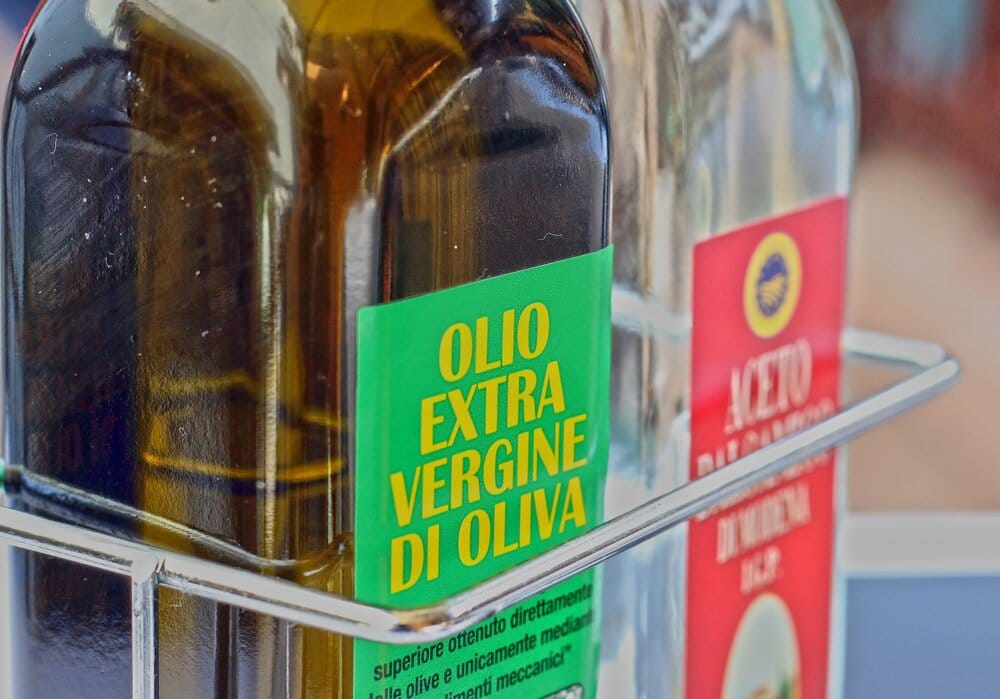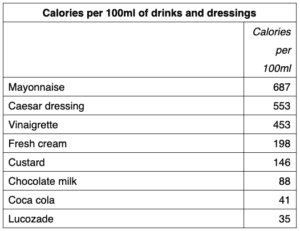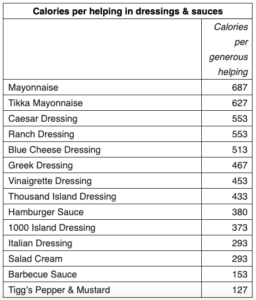By David Saunders| UPDATED: 05:28, 29 January 2020
The calories in dressings and fatty sauces added to improve the bland flavour of diet foods are one of the biggest obstacles to dietary progress
According to polling for Tigg’s, removing them from the diet, or choosing low calorie options, will make a significant difference to the effectiveness of weight reduction programmes, the poll finds.
Some dressings and sauces have more calories by volume that desserts, fizzy drinks or fresh cream, separate analysis found. Some dressings have more than three times the calories in fresh cream.
Consumers are also seduced into eating more than they should by overestimating serving sizes. In some cases, recommended serving sizes are well below the amount that consumers naturally help themselves to.
Asked to identify, without checking, what a suggested serving size would look like, more than half chose an amount more than double that recommended.
According to research for Tigg’s, a liberal shake of the dressing or sauce bottle is seen as a reasonable action if applied to a ‘worthy’ salad or other diet food. A shake could easily release several times the recommended portion size of most sauces and dressings.
“If consumers apply the amount of dressing that some producers recommend, they’ll find that the dressing is a bit skimpy”, said Jacob James of Tigg’s. “What our polling found is that people tend to slosh on quite a bit of dressing or sauce. That’s fine if you are using a healthy, low-calorie option, but a more liberal shake or two of a fatty sauce or dressing can stop a diet in its tracks.”
The analysis for Tigg’s found that some dieters were consuming up to half their daily calories in dressings and sauces alone to enhance their flavourless diet foods.
A salad given a generous coating with caesar dressing would be adding more than 13 times the calories in an equivalent volume of coca-cola and three times the calories in the same volume of pure cream.
The case for salads as part of a dietary programme has been firmly established. A 2019 study published in the Journal of the Academy of Nutrition and Dietetics found that consuming vegetable-based salad is directly linked with higher nutrient intakes and diet quality. Combining salads with healthier dressings maximises their beneficial impact.
Top late tips for getting back on the diet wagon and avoiding flab:
-
Be aware of the calories in sauces and dressings: Measure out a recommended serving size and compare it with what you would normally eat.
-
Avoid the sauces and dressings that pack a calorific punch – or be careful not to consume too much.
-
Choose sauces and dressings that are all-natural and low in calories
-
Oil-rich sauces are likely to pack the largest calorific punch. 100 ml of olive oil contains more than 800 calories.







